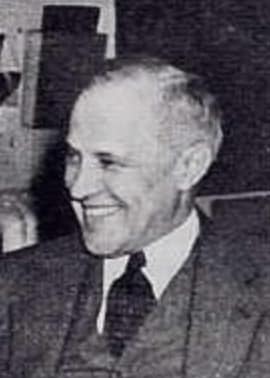
Karl Taylor Compton was born in Wooster, Ohio, USA, on September 14, 1887, the eldest of three brothers, including Arthur Compton and Wilson Martindale Compton and one sister, Mary. From age 10, Karl attended Wooster public schools and took physically demanding jobs during secondary school to earn his tuition for college. In 1902, Compton skipped a grade and went into Wooster University’s preparatory department to complete his last two years of high school. In 1908, he graduated cum laude from Wooster with a bachelor’s degree in physics, and earned a master’s degree the following year.
During the academic year 1909–1910, Karl was employed as an instructor in Wooster’s chemistry department before entering a graduate program at Princeton University. In 1912 he obtained his Ph.D. in physics, graduating summa cum laude. During that period he had published with colleague Owen Richardson several papers describing the release of electrons from metals when exposed to ultraviolet light, ultimately verifying Einstein’s 1905 explanation of the photoelectric effect. Compton was hired immediately by Princeton University to teach physics. The following year, he married Rowena Raymond and he left Princeton to teach physics at Reed College in Portland, Oregon for the academic year 1913-14.
However, Compton returned to Princeton in 1915 as an Associate Professor, while also serving as a consultant for the General Electric Corporation. During World War I, he served as an associate science attaché at the US Embassy in Paris. When the war ended in 1918, he returned to Princeton. His research at Princeton involved the study of the motions of electrons in gases and the nature of fluorescence, as well as the effects of collisions of electrons with the atoms of various elements.
In 1930, Compton was appointed the president of MIT, and through his leadership transitioned MIT from what had been a training ground for industrial workers into a world-class research facility that was also a world-class educational institute. This transformation began with the creation of a $1.2 million research laboratory for Physics and Chemistry, that expanded its research activities in the fields of nuclear physics and radar technology. Research in physics at MIT shifted from individuals working in isolation to groups of researchers working in concert with each other, fostering an environment of cross-fertilization, among theorists, experimentalists, and engineers.
In 1948, Karl Compton retired as President of MIT, having served in this role for 18 years, making him one of the longest-serving presidents in the institution’s history. In that year, President Truman appointed him as head the Research and Development Board, to ensure scientific preparedness of the United States in the postwar period. Karl Compton passed away on June 22, 1954, in New York City. His contribution to experimental physics, including almost 100 scientific papers on various aspects of electron physics, such as the ionization of gas molecules by electron impacts and the dissociation of gases by excited atoms is significant. However, he will be remembered mostly for his leadership in transforming MIT into a world class university.
